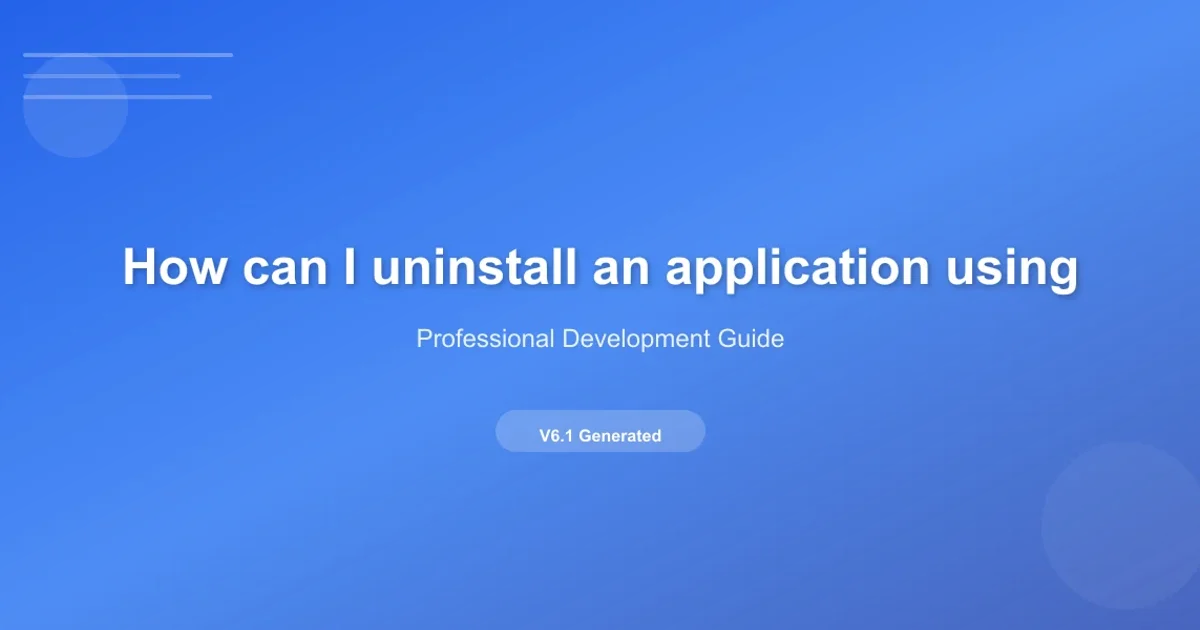Getting neighboring cells information using android Samsung galaxy smartphones
Categories:
Accessing Neighboring Cell Information on Samsung Galaxy Android Devices

Learn how to programmatically retrieve detailed information about neighboring cellular cells (2G, 3G, 4G, 5G) on Samsung Galaxy smartphones using Android APIs, including common challenges and solutions.
Accessing detailed cellular network information, especially about neighboring cells, is crucial for various applications, including network monitoring, signal strength analysis, and location-based services. On Android devices, the TelephonyManager class provides the primary interface for interacting with cellular services. However, retrieving neighboring cell information, particularly on specific OEM devices like Samsung Galaxy, can sometimes present unique challenges due to varying implementations and permissions.
Understanding Android's TelephonyManager for Cell Info
The TelephonyManager class is the gateway to cellular network data. To get information about the serving cell and neighboring cells, you typically use methods like getAllCellInfo() or getNeighboringCellInfo(). The getAllCellInfo() method, introduced in API level 17, is the preferred way as it returns a list of CellInfo objects, which can represent various cell technologies (GSM, CDMA, LTE, NR). Each CellInfo object can then be cast to its specific type (e.g., CellInfoGsm, CellInfoLte, CellInfoNr) to access technology-specific details.
getNeighboringCellInfo() method is deprecated since API level 23. Always prefer getAllCellInfo() for modern Android development.Required Permissions
To access cell information, your application must declare the ACCESS_FINE_LOCATION permission in its AndroidManifest.xml. Additionally, for Android 10 (API level 29) and higher, if you need access to non-serving cell information (like neighboring cells) while your app is in the background, you might also need ACCESS_BACKGROUND_LOCATION. However, for most foreground use cases, ACCESS_FINE_LOCATION is sufficient.
<manifest xmlns:android="http://schemas.android.com/apk/res/android"
package="com.example.myapp">
<uses-permission android:name="android.permission.ACCESS_FINE_LOCATION" />
<!-- Optional: For background access on Android 10+ -->
<uses-permission android:name="android.permission.ACCESS_BACKGROUND_LOCATION" />
<application
...
</application>
</manifest>
Declaring necessary permissions in AndroidManifest.xml
Retrieving Cell Information Programmatically
The following Kotlin code snippet demonstrates how to retrieve and parse cell information, including neighboring cells, from a Samsung Galaxy device. This approach handles different cell technologies and extracts relevant data such as signal strength, cell identity, and physical cell ID.
import android.Manifest
import android.content.Context
import android.content.pm.PackageManager
import android.telephony.CellInfo
import android.telephony.CellInfoGsm
import android.telephony.CellInfoLte
import android.telephony.CellInfoNr
import android.telephony.CellInfoWcdma
import android.telephony.TelephonyManager
import androidx.core.content.ContextCompat
class CellInfoHelper(private val context: Context) {
fun getNeighboringCellInfo(): List<String> {
val telephonyManager = context.getSystemService(Context.TELEPHONY_SERVICE) as TelephonyManager
val cellInfoList = mutableListOf<String>()
if (ContextCompat.checkSelfPermission(context,
Manifest.permission.ACCESS_FINE_LOCATION) != PackageManager.PERMISSION_GRANTED) {
cellInfoList.add("Location permission not granted.")
return cellInfoList
}
try {
val allCellInfo: List<CellInfo>? = telephonyManager.allCellInfo
allCellInfo?.forEach { cellInfo ->
when (cellInfo) {
is CellInfoGsm -> {
val cellSignalStrength = cellInfo.cellSignalStrength
val cellIdentity = cellInfo.cellIdentity
cellInfoList.add(
"GSM: CID=${cellIdentity.cid}, LAC=${cellIdentity.lac}, RSSI=${cellSignalStrength.dbm} dBm"
)
}
is CellInfoWcdma -> {
val cellSignalStrength = cellInfo.cellSignalStrength
val cellIdentity = cellInfo.cellIdentity
cellInfoList.add(
"WCDMA: CID=${cellIdentity.cid}, LAC=${cellIdentity.lac}, RSCP=${cellSignalStrength.dbm} dBm"
)
}
is CellInfoLte -> {
val cellSignalStrength = cellInfo.cellSignalStrength
val cellIdentity = cellInfo.cellIdentity
cellInfoList.add(
"LTE: PCI=${cellIdentity.pci}, TAC=${cellIdentity.tac}, RSRP=${cellSignalStrength.rsrp} dBm, RSRQ=${cellSignalStrength.rsrq} dB"
)
}
is CellInfoNr -> {
val cellSignalStrength = cellInfo.cellSignalStrength
val cellIdentity = cellInfo.cellIdentity
cellInfoList.add(
"NR (5G): PCI=${cellIdentity.pci}, TAC=${cellIdentity.tac}, SS_RSRP=${cellSignalStrength.ssRsrp} dBm, SS_RSRQ=${cellSignalStrength.ssRsrq} dB"
)
}
else -> {
cellInfoList.add("Unknown Cell Type: ${cellInfo.javaClass.simpleName}")
}
}
}
} catch (e: SecurityException) {
cellInfoList.add("SecurityException: Location permission denied. ${e.message}")
} catch (e: Exception) {
cellInfoList.add("Error retrieving cell info: ${e.message}")
}
return cellInfoList
}
}
Kotlin code to retrieve and parse various types of cell information.
Handling Samsung-Specific Behavior and Limitations
While the Android API is standard, Samsung Galaxy devices, like other OEMs, might have subtle differences in how they report cell information or handle permissions.
- Permission Prompts: Ensure you handle runtime permission requests gracefully. Users must grant
ACCESS_FINE_LOCATIONfor theTelephonyManagerto return meaningful data. - Background Restrictions: On newer Android versions, background access to location and sensor data (including cell info) is heavily restricted. If your app needs to monitor cell changes in the background, consider using a foreground service with a persistent notification.
- API Level Differences: Older Samsung devices running older Android versions might not fully support
CellInfoNr(5G) or might have less granular data forCellInfoLte. - Data Availability: The number and type of neighboring cells reported can vary based on network conditions, device firmware, and the specific Samsung model. Some devices might only report a limited number of the strongest neighboring cells.
- Testing: Always test your implementation on a variety of Samsung Galaxy models and Android versions to ensure consistent behavior.
flowchart TD
A[Start Application] --> B{Check ACCESS_FINE_LOCATION Permission?}
B -- No --> C[Request Permission]
C -- Denied --> D[Display Error/Exit]
C -- Granted --> E[Initialize TelephonyManager]
B -- Yes --> E
E --> F[Call telephonyManager.getAllCellInfo()]
F --> G{Is CellInfo List Null/Empty?}
G -- Yes --> H[Handle No Cell Info Available]
G -- No --> I[Iterate Through CellInfo List]
I --> J{Identify CellInfo Type (GSM, LTE, NR, etc.)}
J --> K[Extract Specific Cell Details (CID, PCI, Signal Strength)]
K --> L[Store/Display Cell Information]
L --> I
I --> M[End Process]Flowchart for retrieving cell information on Android.
PhoneStateListener with LISTEN_CELL_INFO or LISTEN_CELL_LOCATION to receive updates when cell information changes, rather than polling getAllCellInfo() repeatedly.